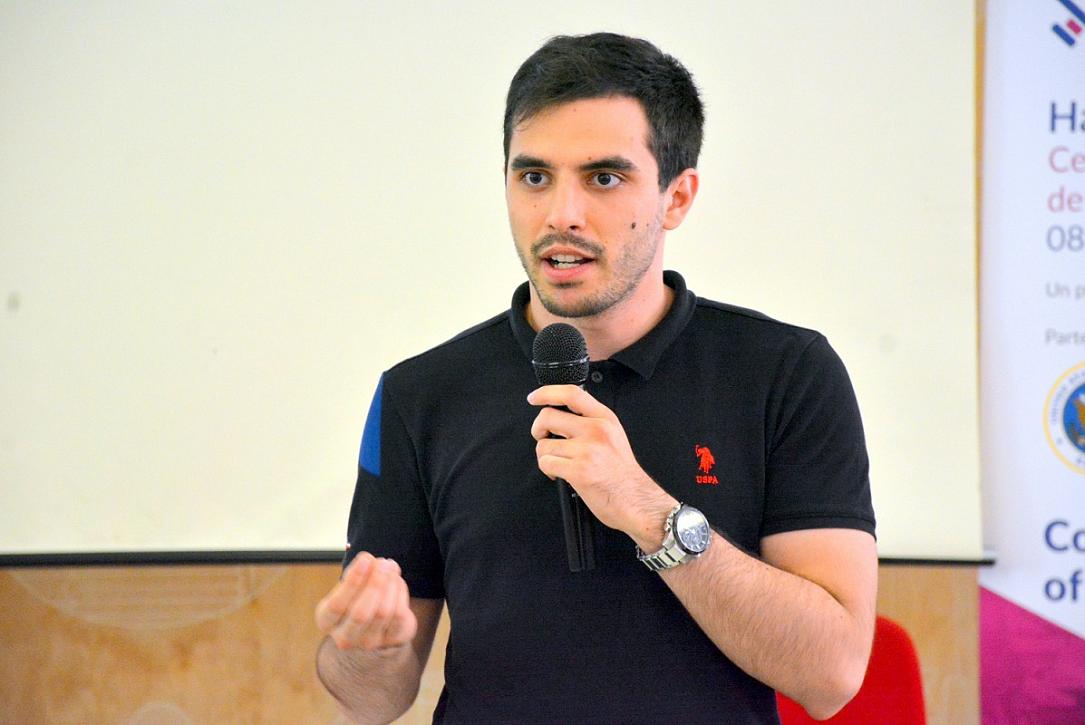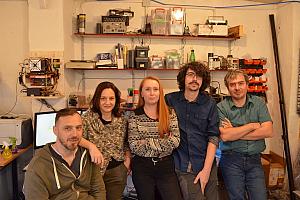Romanian startup plans to take its AI-based x-ray analysis software to Western Europe and further

Romanian startup XVision started the year strong after attracting EUR 1 million in a new round of seed funding to fuel its expansion plans. The company has developed a medical platform based on artificial intelligence algorithms that develop products to support radiologists in the analysis and interpretation of medical images. Its solution is in use in more than 50 hospitals and clinics in Romania, Hungary, Slovakia, and Poland, and XVision plans to expand to Western Europe this year and to the United States, starting in 2023.
The funding round announced in mid-January is the second obtained by XVision, which has attracted a total of EUR 1.5 million so far. It was led by bValue, alongside investors from Romania - GapMinder, RocaX, Cleverage, Growceanu, and Cristian Pop as an angel investor- and Poland - ResQMed and Marek Dziubinski.
The company’s solution distinguishes between normal x-rays and those with anomalies, providing doctors with a simple way to triage or prioritize patients. XVision’s AI models can spot the most common 17 chest radiological and show where anomalies are on an image. Locally, it was also used in a national TB-screening program coordinated by the National Institute of Pneumoftiziology Marius Nasta, helping the medical staff to analyze chest x-rays faster and more efficiently, and in response to the Covid-19 crisis. More about this and the company’s expansion plans in this Q&A with Ștefan Iarca, CEO & co-founder of XVision.
What counties in Western Europe do you target for the recently announced expansions? What factors determine choosing certain countries?
For the first part of the year, we will target the countries in the DACH and Benelux regions. We chose these countries because of their medical infrastructure, openness to technology, and the high number of imagistic investigations carried out here. Furthermore, we believe they offer a greater openness towards the United States.
How are you preparing for the expansion to the United States?
XVision develops medical software that needs all specific approvals to be able to be sold in a particular market. So, the first step is obtaining the FDA certificate that will make us eligible for the market there. At the same time, we will start looking for business partners, and medical ones, which will help us penetrate the market. The US is extremely competitive, and many of our competitors are either present there or wish to enter the market; this is why, at this time, we pay great attention also to the product portfolio and to the development directions we will tackle.
How large is the team? How many do you plan to hire in the coming period?
At present, we have 14 people in the team; many of them deal with developing the software technically or have a medical background. In the coming period, we plan to bring on board 5-7 colleagues with expertise in the areas of business development, AI solutions development, and medical experience in the imaging area.

With what hospitals/ clinics are currently you working? Do you have a number of clients you plan to reach this year?
We are working with more than 50 private clinics and public hospitals in Romania and abroad. In Romania, our biggest client in the private sector is Regina Maria, where XVision is implemented in their imaging centers. At the same time, in the public sector, we collaborate with several large university hospitals such as the Marius Nasta Institute, the Timișoara County Hospital or the Sibiu County Hospital, but also with smaller, city or town hospitals (in Deta, Hirsova). Outside of Romania, we are present in Poland, Slovakia, and Hungary, where we currently work only with public hospitals.
As far as the number of clients is concerned, we are optimistic about being able to double the current one.
On what infrastructure does the adoption of the XVision solution depend? What factors impact the decision to adopt the platform? How does the training part go?
XVision can be implemented in any clinic/ hospital that has digital imaging equipment. The technical integration is done on premise or in the cloud, and, at the end of the process, the doctor has the software perfectly integrated into the daily workflow.
The acquisition factors vary from one hospital to another; some hospitals/clinics see a real help in XVision when dealing with a large volume of medical images that need to be analyzed, while others wish to reduce human error or use the software as a learning tool for early-career doctors. One constant in all the acquisition decisions is the high number of medical images that doctors need to analyze.
As far as the training part is concerned, because of the pandemic, we moved all the sessions online. During a training session, we try to explain to the doctors, besides the way the app works and specific use-cases of the app, the limitations of artificial intelligence. We want very much to have a strong connection with the doctors who use the app and, because of this, we usually double these online sessions with in-person visits where we meet individually with the doctors and try to gather relevant feedback.
Are there limitations related to the authorization of the product?
Every market (geographical region) has strict regulations concerning the sale of medical software programs, and certain certifications are usually needed to show that the product respects/is up to existing standards. In Europe, this is the CE certificate, which we have, and in the States, it is the FDA certificate.
Besides the two products you currently have (a software program dedicated to chest X-rays and another created for faster and more accurate analysis of chest CT scans), are you working on developing others?
We want to add a new product to our portfolio this year.
How was the experience of being involved in the national TB screening program? Do you plan similar initiatives?
The national TB screening program was our first large project, and we are thrilled about the collaboration we have with the Marius Nasta Institute. The program is still ongoing and will last approximately another year – the best part is that we can see the results of our work by reaching a high number of people and making a positive contribution to their health.
We are open to similar opportunities, and, if the opportunity arises, we will definitely take part in others.
XVision was also used in the triage of the patients potentially infected with Covid-19. Is the project still ongoing?
Indeed, at the start of the pandemic, we made a Covid-19 triage score for chest x-rays. When we developed this new feature, it was not yet known with certainty what type of imaging investigations would be used in analyzing Covid-19 cases or the ones with the most conclusive results. After the first months, practice showed that CT images of lungs are the best option, so we started developing new functionality for CTs as well, where we identify imaging patterns correlated with the SARS-CoV2 virus and their volumetric quantification.
We can say we are still rolling out a Covid component that we have implemented in almost all the hospitals in Romania we work with, among them Marius Nasta Institute, Timișoara County Hospital, and Sibiu County Hospital.
XVision started being developed during your studies at the Timișoara Polytechnic University. How was the shift from the academic to the entrepreneurial environment?
XVision started during our studies at UPT (Timișoara Polytechnic University) – we had a lot of support from our teachers and the University in general. Throughout our student years, we were involved as a team in many entrepreneurial activities (we took part in Innovation Labs several times) – this made the shift from an environment including the academic side to one exclusively entrepreneurial much easier.
(Photos courtesy of the company)
simona@romania-insider.com













